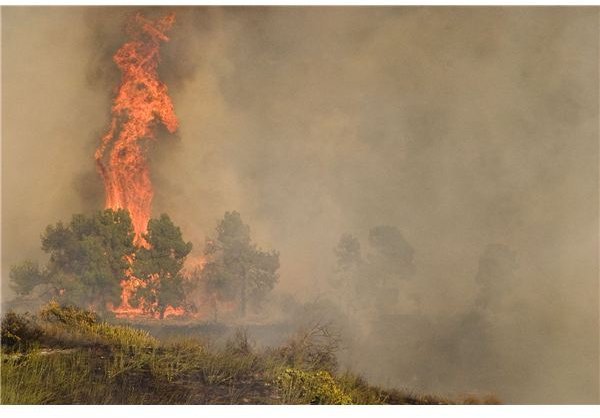Modern Techniques in Fighting Forest Fires
The Smokey the Bear fire safety campaign of the 1970s and 1980s had the unintended consequence of making the forest more dangerous when fire did eventually break out. Its campaign, with its tagline of “Only You Can Prevent Forest Fires,” helped create a large-scale buildup of timber and dead wood in forests everywhere. Combined with drought, this created the perfect conditions for fire to grow out of control. With August 2013’s Yosemite Rim Fire – the third largest wildfire in California history – fire fighters employed some unusual techniques to fight fire that actually ended up working and contain lessons for all.
Why Forests Need Fire (Sometimes)
Fire is part of the natural growth cycle: It destroys some trees and plants and causes other to grow. Without fire, trees like the Jack Pine would never release their seeds. And dominant trees, like the Balsam fir, would spread, attract pests or disease, and die off. Fire can promote biodiversity and health, restoring an ecosystem.
The U.S. Department of the Interior sets 10 million acres of forest land on fire using controlled burns or prescriptive fires each year. This reduces the dangerous undergrowth that can cause wildfires to grow out of control, and promotes species biodiversity and the growth of native plants.
Ways to Fight Fire
The Yosemite wildfire, and other recent fires like it, feature a range of modern fire fighting techniques including the following:
-
Backfires: Crews in Yosemite set backfires using a mixture of gasoline and diesel fuel. Test flames shot over 50 feet high. The backfires scorched the earth and burned up the wood that the forest fire would use as fuel. This tactic prevented the Rim Fire from crossing into two of Yosemite’s beloved groves, Tuolomne and Merced.
-
Clearing the land: While it may seem aggressive, fire fighters often use tractor plows and bulldozers to take out vegetation in the line of fire. Much like the backfire method, this removes flammable vegetation from the line of fire and can prevent the fire from growing.
-
Via air: Helicopters and planed fitted with large tanks can fly above the fire and spray either water or chemical fire retardant. While this won’t work in the thick of a large fire, it can help prevent a fire from spreading by covering the ground with water or chemical retardant. When the fire hits the wet land, it sizzles and dies.
-
Raise awareness of fire safety: Fire fighters are also trying to raise public awareness around fire safety issues, such as home construction and illegal fires.
While fire fighters were ultimately successful in putting out Yosemite’s Rim Fire, the park sustains a 60 mile “dead zone,” threatened animal species like the grey owl were displaced from their homes and there is a real danger of land erosion. It is clear that more work needs to be done when it comes to fire management, land control and controlled burning to prevent massive fires like this one.
References
- Is the Yosemite fire a good fire? http://www.csmonitor.com/Commentary/the-monitors-view/2013/0826/Is-the-Yosemite-fire-a-good-fire
- Why forest fires are good and amazing - http://www.minnpost.com/intelligencer/2011/09/why-forest-fires-are-good-and-amazing
- Fixing how we fight forest fires - http://articles.washingtonpost.com/2013-09-20/opinions/42246901_1_forest-fires-stewardship-contracting-thinning-and-controlled-burns
